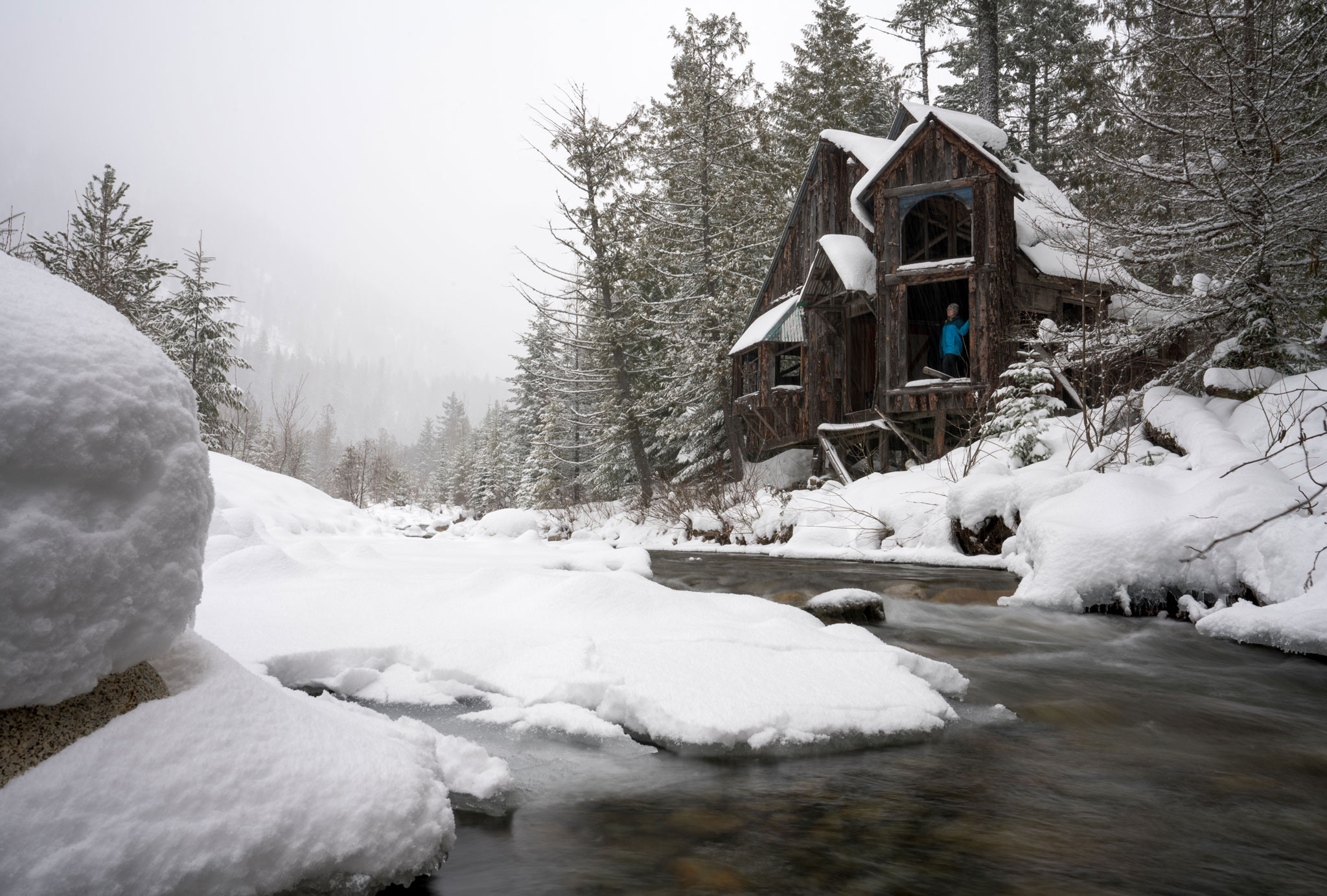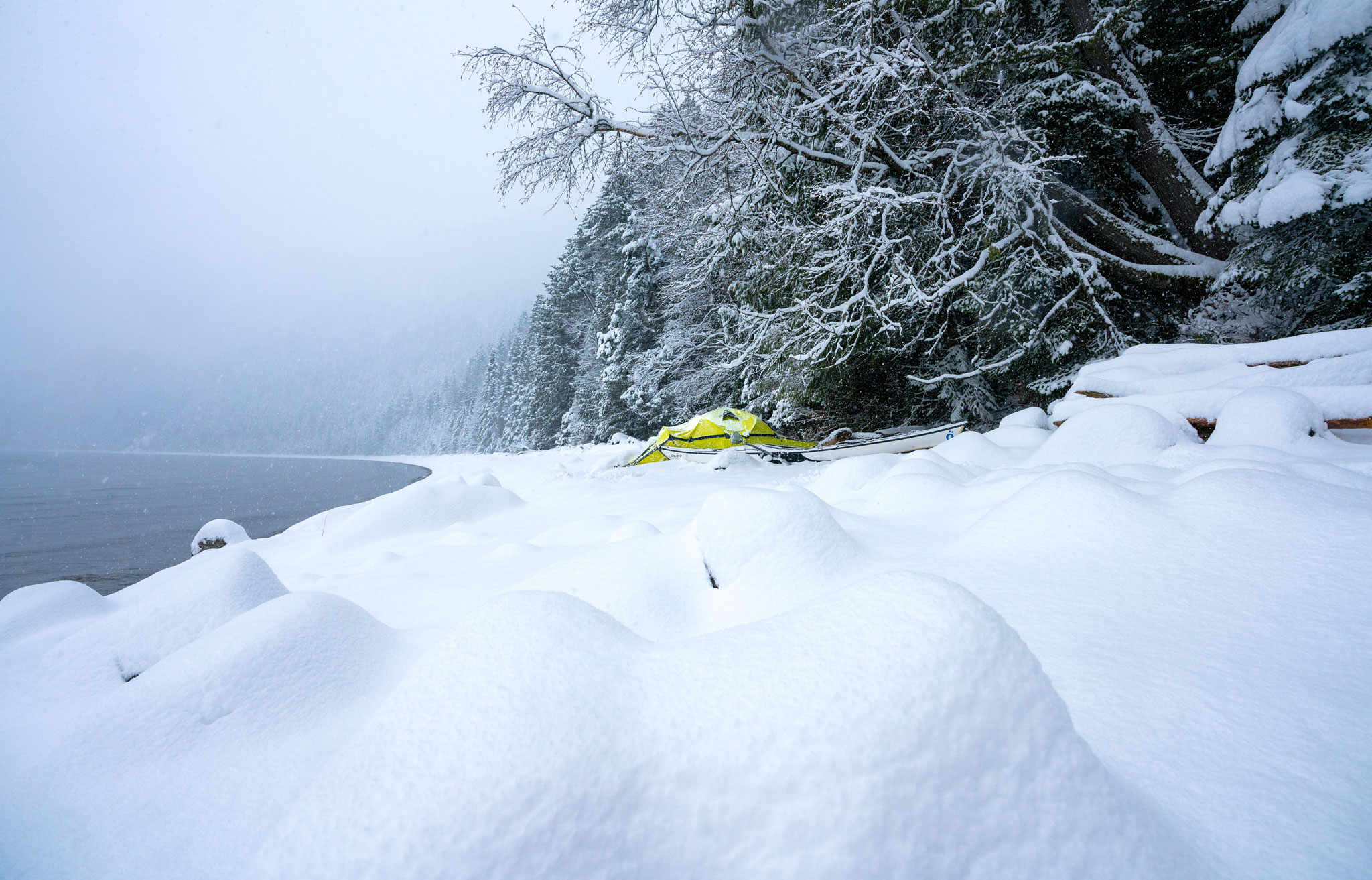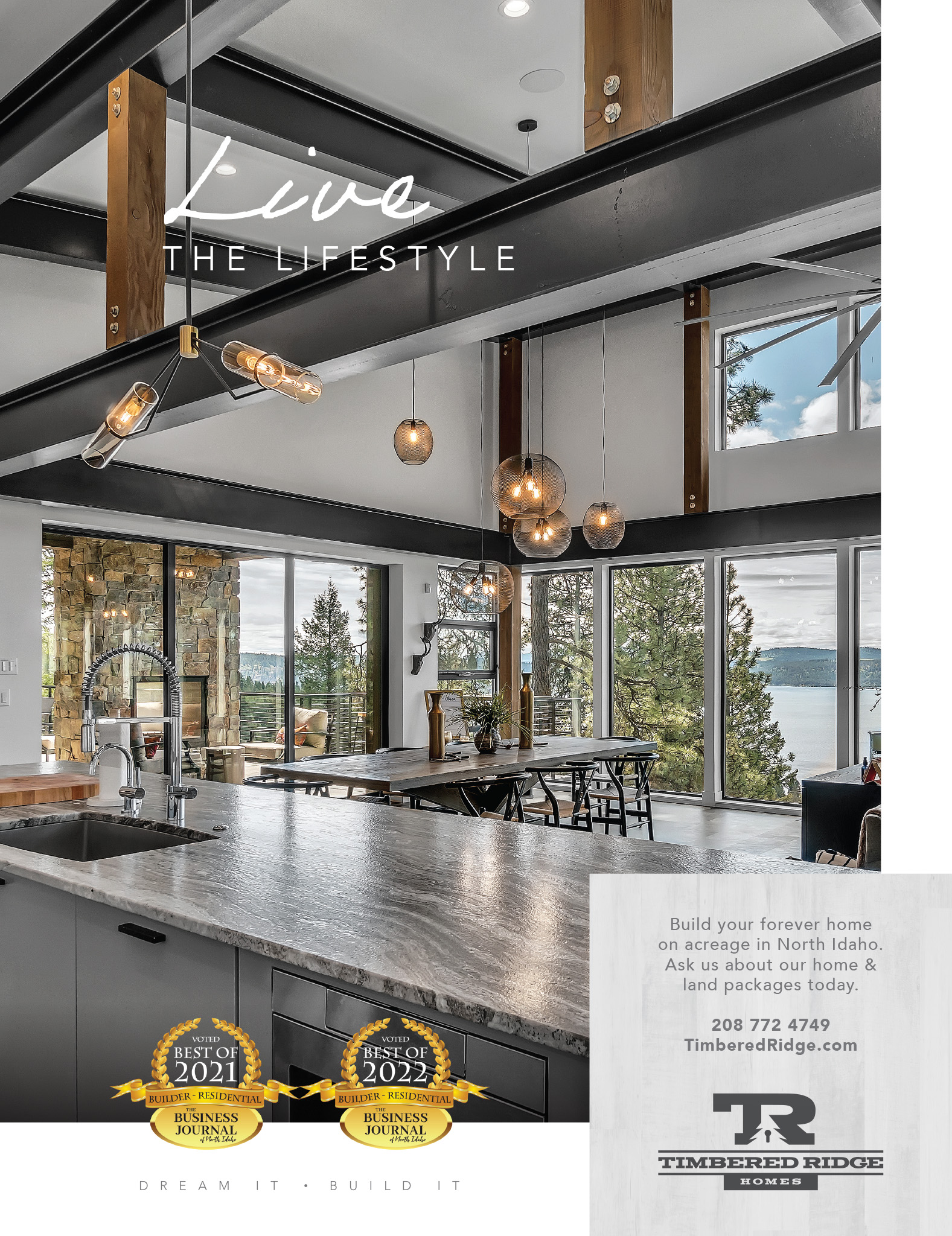A ferocious wind rips its way across the surface of the lake, whipping up massive waves that are now crashing on shore a few feet from my tent. As predicted, winter has returned with a vengeance, and I am sitting in a two-man expedition tent on the rugged eastern shore of Lake Pend Oreille alone and enjoying every minute of this.
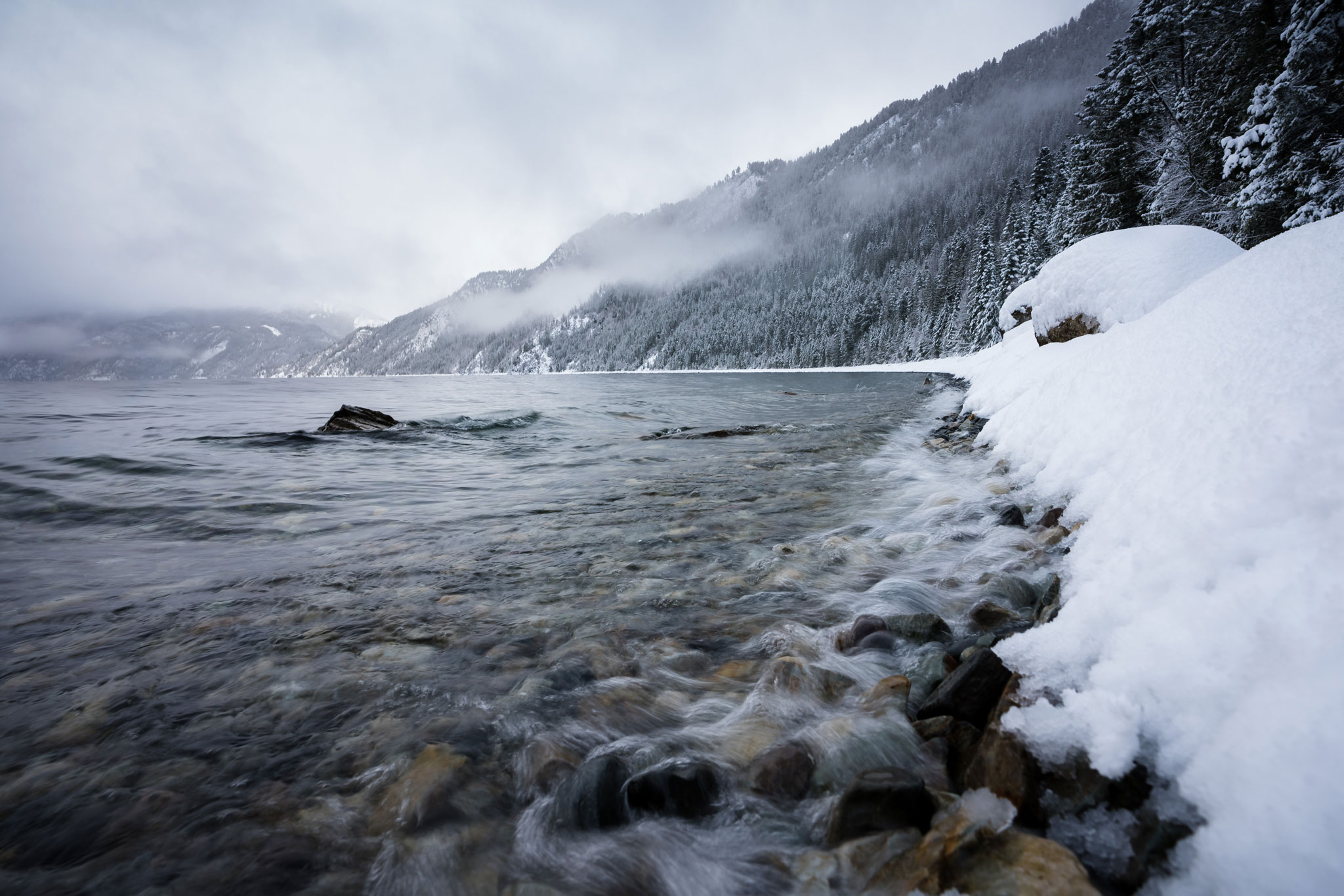
“There is no such thing as bad weather, merely inadequate gear,” I think to myself as I ponder how much longer I will stay in my warm, dry sleeping bag.
The camping experience during winter takes on an entirely different feeling than camping during summer; the cold complicates some things while simplifying others. Staying warm becomes a challenge while keeping cold food is easy. Lumpy ground? No worries, your body heat will melt out a nicely contoured spot in snow. Overheating while hiking? That’s much harder to do when it’s 12 degrees.
Yet, the peace and silence that can be found in winter landscapes must simply be experienced to be fully understood and appreciated. The blanket of white — untouched, cold and stunningly beautiful — is what draws me into the mountains during the long, cold months between Thanksgiving and St. Patrick’s Day.
My unending love for winter and the cold motivates me to be active far more than in the heat. The cold invigorates me. It’s what drove me to load my sea kayak with camping gear and head off into a winter storm for the night.
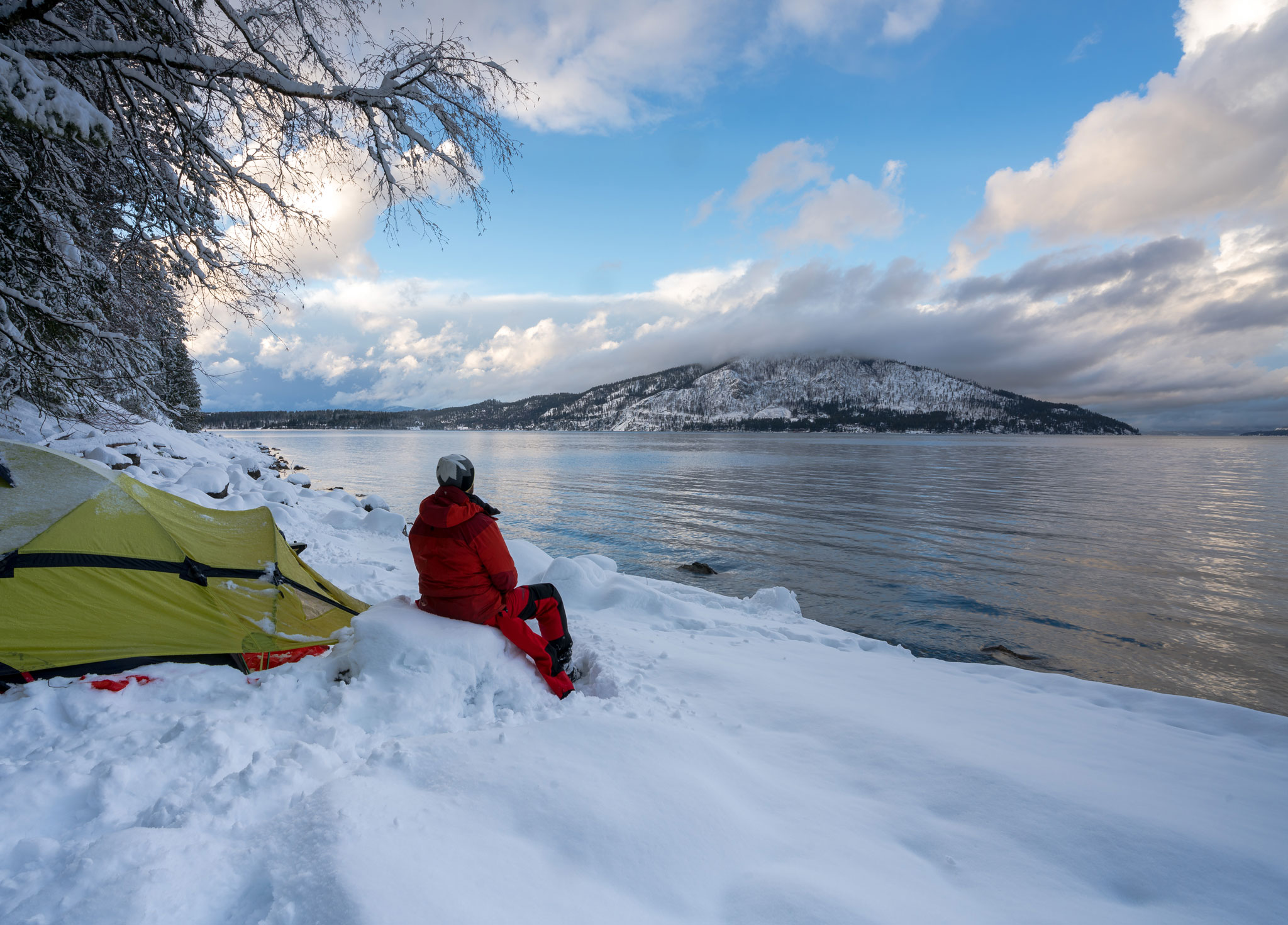
» There is something truly special about sleeping in the snow; surviving in the snow.
Days before waking up in my tent on that remote beach on one of the most rugged lakes in the Northwest during one of winter’s fiercest storms, I poured over the logistics of my expedition. I used satellite imagery to map out my path and determine departure and arrival times. Plan A and B were not enough. I plotted Plan C and D as well, expecting the worst but hoping for the best.
I launched from Bayview in the afternoon with the full force of the first wave of snow hitting the region. At 25 degrees, the air was cold and the visibility was about a quarter-mile. But I knew the roughly 4-mile route like the back of my hand — Bayview to Eagle Boat Launch to the Bernard Cliffs to Long Beach.
I had spent about an hour at the top of the boat launch organizing and meticulously stuffing the necessary gear I would need into the three large storage compartments of my sea kayak. I had all of the gear I could ever need to be comfortable and safe, I just had one looming question: Where am I going to set up camp?
Choosing a winter camping location is the same as choosing a summer one. You look for the perfect spot. On the beach, that spot had to be level enough to place a tent and lay out gear and high enough off the water to keep waves from washing into the tent. The cover of trees would be ideal to keep the snow load off of the tent and the gear. A spot for a fire would be nice, too.
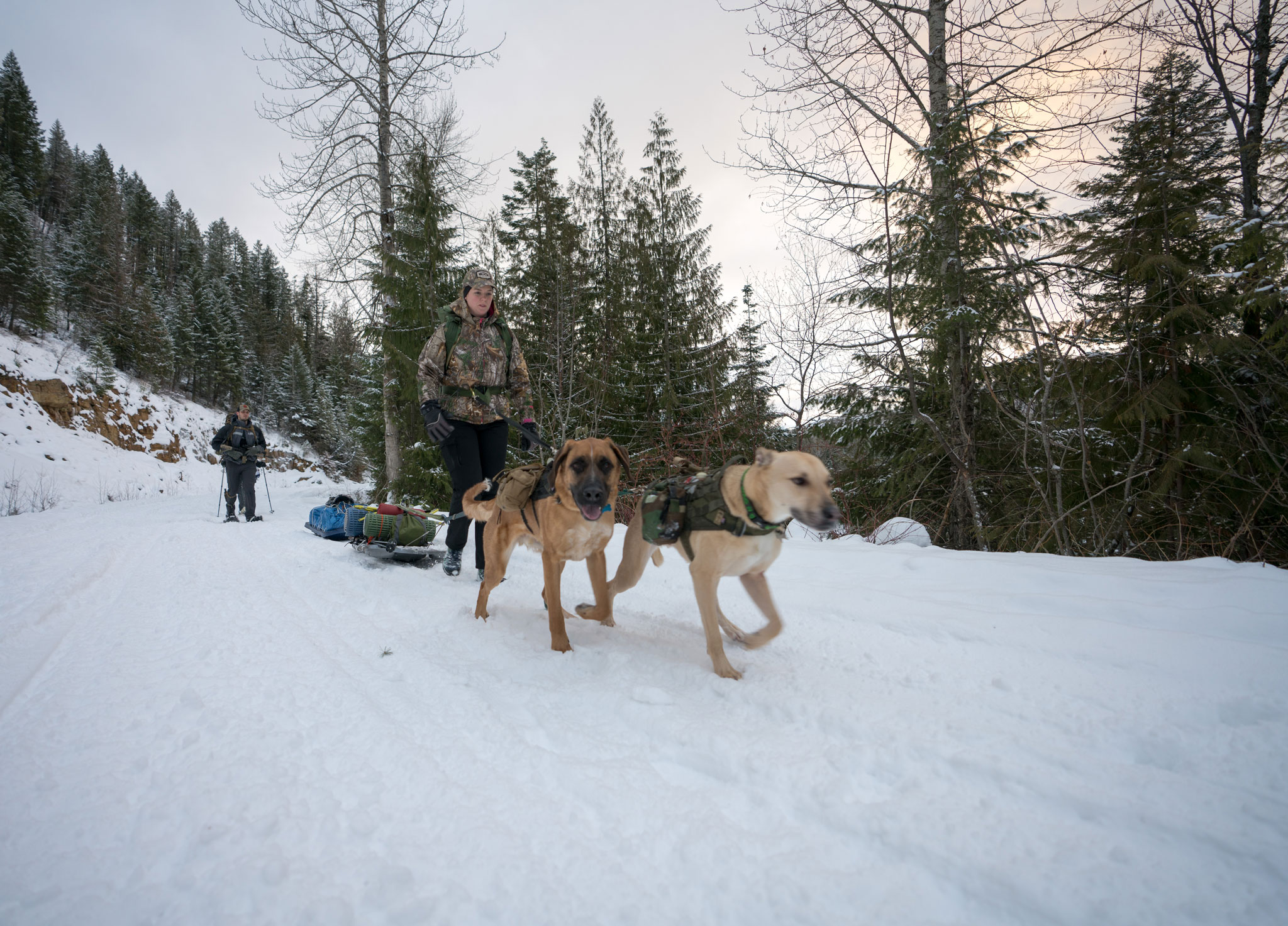
Despite the brewing storm, the water was calm and made for a mellow crossing from Eagle Boat Launch over to the Bernard Cliffs. I had paddled this region of the lake many times and knew it well. What I wasn’t as familiar with was the feasibility of camping at some of the spots I had in mind.
The water level of the lake was down, and I was faced with large boulder fields, vertical ledges, or long steep beaches up to my potential camp spots. One other factor that prevented me from camping along the Bernard Cliffs, as originally planned, was that all of the potential campsites were sitting at the base of huge avalanche chutes. I decided being swept into the lake while in my tent, in the middle of the night, under a wall of snow, was not a way I wanted to wake up.
And so, I continued on, paddling past the cliffs to Long Beach and toward the old mine site near Lakeview. I carefully examined the beach, steep and rocky, but covered in two feet of snow. The west end had a nice flat spot at the very top under a large tree. Landing would be manageable and launching could be fun. Ultimately, I decided this was my best option.
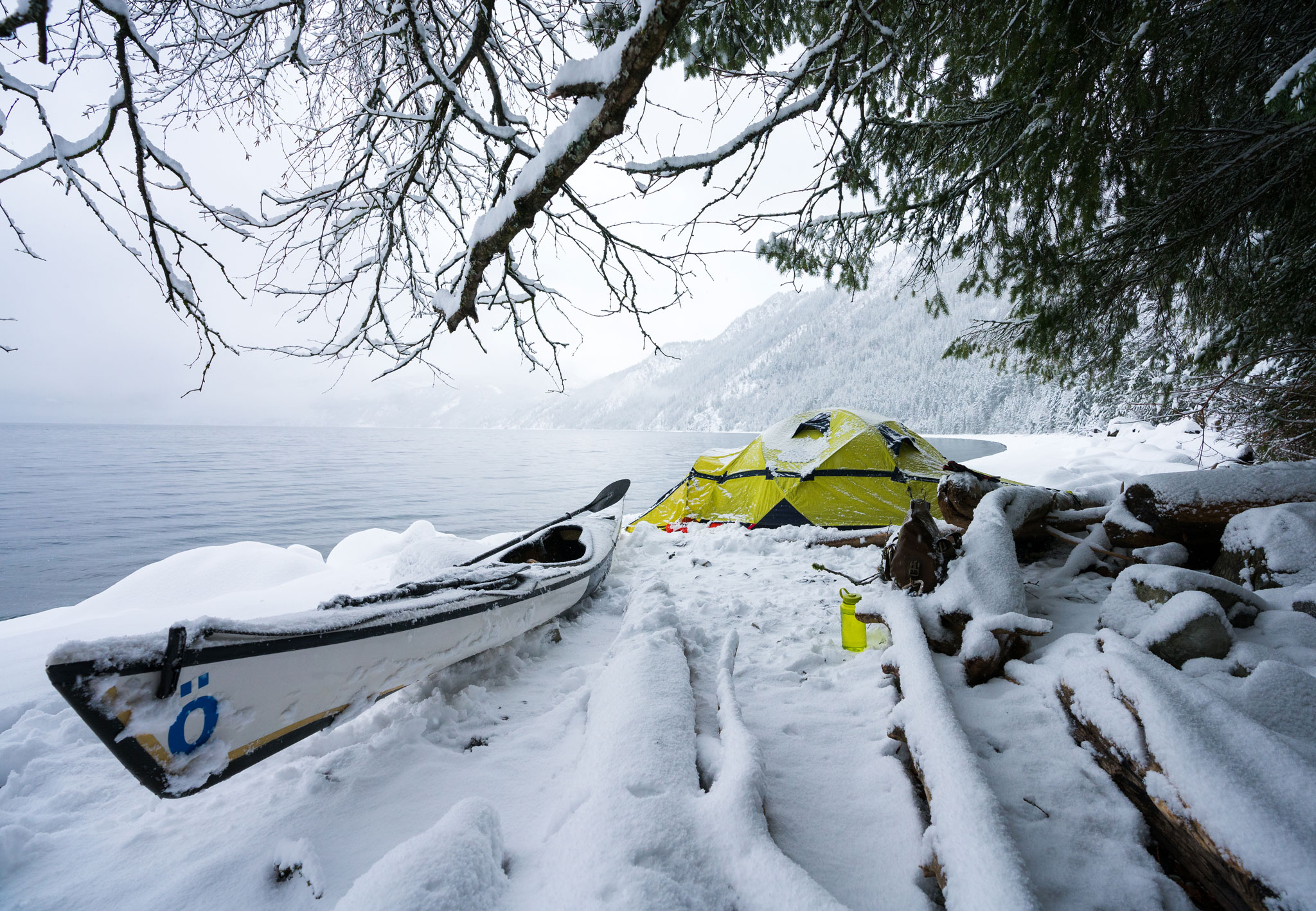
» The campsite, with it’s elevated position, perfectly nestled under a large tree, was like a lighthouse in a storm.
I dragged my loaded kayak up the beach. After treading through 2 feet of snow and sucking cold air into my lungs, I found a nice spot to set up camp. Then the work started.
I emptied the gear from the kayak and began to set up on this cold and remote beach. The footprint of the tent went down first after I had stomped out a decent pad in the snowpack. Next, I set up the tent on the tarp.
The ground was frozen and 2 feet below the snow. Regular tent stakes would not do. This was a job for snow stakes and anchors. Once I had a solid shelter ready, I removed my sleeping pad, sleeping bag, dry bag containing all my clothes and kitchen bag out of the kayak and put them in the tent where they would not get wet in the snow. By now, I had been on the beach for about an hour and it had snowed another 3 to 4 inches.
When most people think of winter camping, they think it would be impossible to stay warm or escape the cold. But with the right gear and an ability, or determination, to stay busy, it’s actually easy to stay warm.
Story continues after a quick message from our sponsor below.
Once I set up the tent, I cleared out an area for my kitchen. Now this was a sea kayaking expedition, so don’t get too excited thinking I had a fancy setup. On a trip like this, conserving energy is critical. Mountain House freeze-dried meals are the ticket when you need ease of preparation and high caloric intake. Plus, they are absolutely delicious, particularly the sweet and sour pork and rice.
After rummaging around for a minute I finally found my water filter. Once I had the water filter ready, I trudged through thigh-deep snow down to the water and filtered water into a bottle and a pot. Then I fired up the stove and began the two-and-half-minute process of bringing 4 cups of water to a boil. I poured the water into the Mountain House meal, sealed it up to let it cook, and placed it inside my jacket against my core. I sat on what I could only assume was a snow covered log by the water and enjoyed the partially cleared view across the lake to Cape Horn.

» Sitting on the beach, reflecting on what it took me to get here reaffirmed my reasons for why I do these things: overcoming the deeply personal mental and physical challenges and the ability to experience places few others have or ever will.
After dinner, the storm cleared out, and I was treated to a stunning sunset across the lake. Breaking storm clouds raced across the sky. Orange and pink alpenglow bathed the freshly snow-covered world around me in a brilliant light.
Not having anyone to talk to other than myself, I wandered around the beach taking photos, pondering life’s greatest mysteries, and watching the remnants of the storm clouds race by.
I loved how the snow had taken a jagged, rocky beach and turned it into a soft and friendly looking world of white. What were once large rocks now looked like soft white mounds spreading out across the beach. It was a site I would not soon forget.
I took photographs of just about anything that peaked my interest: those aforementioned mounds, with my camp nestled between them, the clouds and fog racing around the high mountain peaks around me, and the dark storm-churned lake in front of me.
For awhile, I just sat on a snow mound in front of my tent, thinking about everything and nothing — mostly enjoying the solitude and experience of being in such a beautiful place.
Eventually, darkness and silence took over. There was an eerie calm that had settled over the lake. The wind died, nothing stirred in the woods, not even a wave rippled up onto the rocks. At that point I was exhausted and decided to turn in for the night.
» Lake Pend Oreille is a mind-boggling creature. One second it can be a ferocious and uncontrollable monster, and a second later it can be as calm and docile as a lamb.
I situated myself in my sleeping bag and quickly began to fall asleep, wondering when the next storm would hit. After a few hours of good sleep, I was awoken by the sound of dumping surf and viscous wind ripping along the beach and around my solitary camp.
As the faintest amount of dawn’s light began to show itself, I peered through one of the vents in the tent and looked across the camp and down the shore. What I saw was a windswept moonscape.
The kayak was almost buried under a snowdrift. All of my footprints and tracks were long gone, and the waves were crashing on shore from a height of 5 or 6 feet. I had planned to stay a couple of days but the intensity of the storm cut my trip short. I knew I had a battle ahead of me in getting home, not only in having to break down camp and re-pack my kayak, but also in paddling safely back across a very angry Lake Pend Oreille.
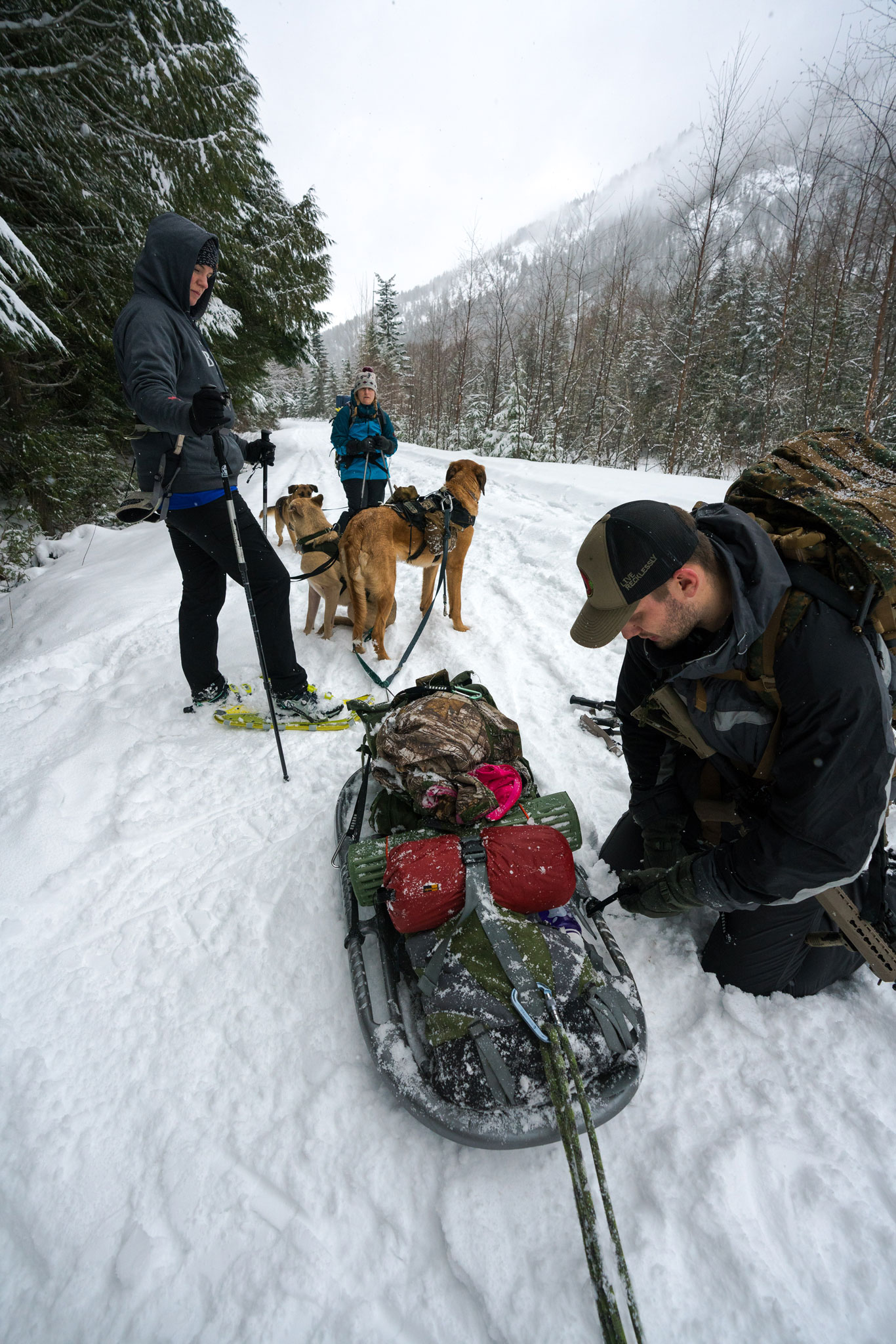
» Despite the inherent challenges, winter adventure motivates me. It tests my survival skills in both enjoyable and daunting ways.
I quickly got dressed, ate a couple of Cliff Bars and some fruit, and began packing up gear. During the night, the temperature must have warmed above freezing causing the tree above camp to drop all of its snow on my tent. The snow melted and soaked into the pole sleeves. Once the next storm hit and the temperature plummeted to around 15 degrees, the metal poles froze to the sleeve fabric. This made for a very frustrating 45 minutes of disassembling the tent in 50 mph winds and driving snow.
Once the kayak was packed, I donned the remainder of my paddling gear and set my boat up on the beach and loaded myself into it. I timed my high-speed slide down the beach into the breaking waves with only marginal success and promptly took two 6-foot waves to the head as I left the beach and hit the water. Two-and-a-half harrowing hours later, I arrived back in Bayview, chilled but safe and sound.
I have found that my winter adventures fall on both ends of the spectrum of fun. One involves testing my skills to the absolute limit, like on this camping trip, where I ventured out alone in extreme weather and fought for my life against ocean-sized waves during one of winter’s worst storms.
The other involves a mellow trek into the snowy backcountry with family and our dogs to camp in an abandoned cabin on one of the most beautiful creeks the region has to offer. There, the only real worry is making sure we have fun.
In either adventure, my motivation is the same:
to seek out the cold. N
Story & Photography By Chris Celentano
As Featured In: 2019 Winter/Spring CDA Edition
